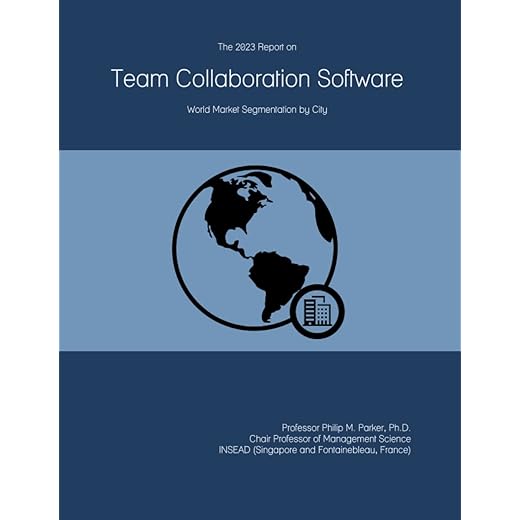Understanding Acme Hours
In today’s fast-paced workplace, maximizing productivity is a top priority for many organizations. Acme Hours refer to specific time periods when individuals or teams are most focused and effective. By leveraging these optimal working hours, businesses can enhance overall efficiency and output.
Recognizing and utilizing Acme Hours allows for smart scheduling, enabling teams to tackle complex tasks when they are most energized and alert. This approach not only boosts productivity but also fosters a healthier work-life balance by aligning work demands with natural energy levels.
In this article, readers will explore the concept of Acme Hours in depth. They will discover the benefits, best practices, and challenges associated with implementing this innovative scheduling technique. By understanding how to identify and maximize Acme Hours, organizations can transform their work environments and achieve remarkable results.
Amazon.com
What Are Acme Hours?
Acme Hours represent a critical concept in the realm of workplace productivity, hinging on the idea that everyone has unique peak performance periods throughout the day. These periods are identified as the times when team members are most alert, focused, and motivated—essentially, their “golden hours.” The term “Acme” reflects the pinnacle of productivity, suggesting that during these hours, individuals can deliver their best work.
The Origins of Acme Hours
The concept of Acme Hours isn’t entirely new; it draws on research from fields such as circadian rhythms and chronobiology, which study how our natural biological clocks influence energy and concentration levels. By acknowledging that energy and attention fluctuate throughout the day, organizations can harness this knowledge to optimize task performance. Acme Hours have roots in traditional work scheduling practices, evolving into a method for maximizing output rather than adhering to the generic 9-to-5 workday framework.
The Purpose of Acme Hours
The main purpose of establishing Acme Hours is to optimize productivity within teams and organizations. By pinpointing these high-energy times, companies can allocate significant tasks such as strategic planning, creative brainstorming, or complex problem-solving to periods when employees are naturally inclined to excel. This not only improves individual performance but also enhances team dynamics, leading to a more engaged and productive workforce.
Utilizing Acme Hours enables organizations to:
Real-World Application
For example, imagine a software developer who thrives in the quiet hours of early morning. When businesses respect their Acme Hours, this developer can engage in deep work during these times, producing cleaner code and engaging in meaningful problem-solving. Conversely, a marketing professional might find their creativity peaks in the afternoon, making that the ideal time for brainstorming sessions.
This dynamic interplay of individual variations illustrates the importance of tailored scheduling based on Acme Hours. Recognizing and implementing these periods within organizational frameworks can lead to a profound shift in performance metrics and employee satisfaction.
By understanding Acme Hours and their significance in daily operations, organizations are better equipped to set the stage for improved productivity. The next section will delve into the myriad benefits that come with successfully implementing Acme Hours in a workplace setting.
The Benefits of Implementing Acme Hours
Implementing Acme Hours within an organization offers a host of advantages that can significantly enhance both individual performance and overall productivity. By acknowledging when employees are at their best, companies can create a work environment that not only fuels focus but also promotes well-being and satisfaction. Here’s a closer look at the benefits of adopting this smart scheduling approach.
Increased Focus and Productivity
One of the most notable perks of utilizing Acme Hours is the boost in focus. During these designated time slots, employees can dive into challenging projects or complex tasks with minimal distractions. This deep concentration often leads to high-quality work and the ability to meet deadlines more efficiently. For instance, a graphic designer who understands that their imagination flourishes in morning hours can set aside this specific time for creating new designs, resulting in more innovative outputs.
Reduced Burnout
By scheduling tasks according to energy levels, Acme Hours can help mitigate employee burnout. When workers are allowed to tackle demanding tasks during their peak times, they are less likely to feel overwhelmed or fatigued. This approach promotes a healthier work pace and reduces the stress of scrambling to perform during less optimal times. Companies that prioritize Acme Hours often find their team members enjoy a better mental health balance, ultimately benefiting the entire organization.
Better Time Management
Acme Hours encourage employees to plan their days with intention. By recognizing their most productive periods, team members can prioritize tasks that require deep thought and engagement during those times while reserving less intensive work for lower-energy periods. This strategic allocation of time can lead to not only enhanced productivity but also greater efficiency in completing daily tasks. For instance, a sales team member might reserve mornings for client outreach—when they feel most energized—while using slower afternoons for administrative duties.
Enhanced Team Collaboration
Implementing Acme Hours can also foster better collaboration among team members. By aligning schedules around peak productivity times, teams can convene for meetings and brainstorming sessions when everyone is most engaged. This collaboration can ignite creativity and lead to innovative solutions, making meetings more effective and enjoyable. A tech startup, for example, might schedule coding sprints during collective Acme Hours, where developers bounce ideas off each other, creating synergy and driving the project forward.
Conclusion: A Path to Empowered Teams
The widespread benefits of Acme Hours illustrate their powerful impact on workplace dynamics. By creating an environment where focus and productivity thrive, organizations can enhance employee satisfaction and cultivate a more vibrant culture. As teams begin to identify and embrace their unique Acme Hours, the next step will be to explore effective strategies for discovering these peak periods and implementing them seamlessly into everyday operations.
How to Identify Your Team’s Acme Hours
Identifying a team’s Acme Hours is vital for unlocking peak productivity. By understanding when employees perform at their best, organizations can tailor schedules that maximize efficiency and engagement. Here are practical strategies for discovering these golden hours.
Surveys and Feedback
One of the most effective ways to gather insights about individual productivity peaks is through surveys and direct feedback. By asking employees about their preferred working hours and when they feel most energetic, managers can collect valuable data to shape scheduling. Here are some questions to consider:
Encouraging input promotes a sense of involvement and investment in the scheduling process, leading to a more committed workforce.
Productivity Tracking
Another effective strategy is to track productivity patterns over a period. Several apps and tools can monitor how employees spend their time, providing insights into when they accomplish tasks most efficiently. For example, tools like RescueTime or Toggl can reveal peak productivity times based on task completion and work activity. By analyzing this data, organizations can identify consistent peaks that indicate Acme Hours.
Trial Periods
Implementing a trial period is also an effective way to discover Acme Hours. Teams can experiment with flexible schedules, allowing employees to test different working hours. For instance, an organization might encourage a rotating schedule where employees work different hours for a week. Observing which hours yield the highest output can help identify optimal working times.
Team Collaboration and Observation
Encouraging team discussions around productivity can unveil shared trends and individual variations. Facilitating open conversations enables colleagues to share experiences, leading to greater understanding of preferred working hours. Managers can observe when team members are most engaged in meetings or collaborative sessions, noting patterns that may reveal collective Acme Hours.
Analyze Task Types
Not all tasks require the same energy levels. Analyzing the type of work performed can illuminate when employees prefer to take on challenging assignments. For example, complex problem-solving might be best suited for the morning when focus is high, while routine tasks could be scheduled for later in the afternoon when energy dips.
This structured approach not only aids in identifying Acme Hours but also promotes a culture of self-awareness among employees. As organizations learn to recognize and respect these peak times, productivity flourishes alongside employee satisfaction.
The next section will delve into best practices for smart scheduling that capitalize on the insights gained from identifying Acme Hours. By implementing these practices, organizations can transform their productivity landscape.
Best Practices for Smart Scheduling with Acme Hours
After identifying a team’s Acme Hours, the focus shifts to effectively scheduling tasks and activities during these peak performance windows. Harnessing the power of Acme Hours requires thoughtful planning and innovative scheduling methods that can enhance productivity and collaboration. Here’s how organizations can implement smart scheduling to maximize the impact of Acme Hours.
Optimize Task Allocation
To make the most of Acme Hours, tasks should be aligned with individual peak performance periods. This means prioritizing high-stakes or complex work during these times, while relegating less intensive tasks to lower-energy hours.
Foster Collaboration
Team collaboration can significantly benefit from structured scheduling. To make the most of Acme Hours, consider the following:
Incorporate Flexible Scheduling
Flexibility can make a significant difference in leveraging Acme Hours effectively. Here are a few strategies to consider:
Regularly Review and Adjust
Acme Hours are not static and may change as team members evolve or as projects fluctuate. Maintaining an awareness of these changes can further enhance productivity:
Encourage a Culture of Self-Management
Cultivating a work environment that values self-awareness and proactive management can further improve the efficiency of Acme Hours:
By implementing these best practices, organizations can create a workplace that thrives on the strengths of Acme Hours, fostering an atmosphere of collaboration, efficiency, and well-being. As companies embrace these strategies, challenges may arise in the implementation process. The next section will delve into these potential hurdles and offer solutions to ensure the successful integration of Acme Hours into daily operations.
Challenges and Solutions in Implementing Acme Hours
Implementing Acme Hours can transform a workplace, yet adopting this strategy is not without its challenges. Teams may encounter various obstacles that can impede their progress. Understanding these challenges and devising actionable solutions ensures a smoother transition into this innovative scheduling approach.
Resistance to Change
Many employees have ingrained routines that they may be reluctant to alter, leading to resistance against the introduction of Acme Hours. Disrupting established patterns can provoke anxiety and uncertainty.
Difficulty in Identifying Individual Acme Hours
Identifying precise Acme Hours for each employee can be a daunting task, especially in larger teams where diverse schedules may complicate the process.
Scheduling Conflicts
Aligning team members’ Acme Hours can prove challenging, particularly if their peak times differ significantly. This can disrupt collaboration efforts and lead to missed opportunities for teamwork.
Complexity of Task Management
Adapting existing workflows to incorporate Acme Hours necessitates a thorough review of task allocations. Teams may find it challenging to rearrange priorities, particularly if unexpected last-minute tasks arise.
Insufficient Buy-In from Leadership
Without strong support from management, teams may struggle to fully embrace and implement Acme Hours. Leadership buy-in is crucial for establishing these hours as an integral part of the organizational culture.
Transition Periods and Adjustments
The shift to implementing Acme Hours can create temporary disruptions as employees adjust to the new structure. This transitional phase can lead to confusion and uneven workload management.
By proactively addressing these challenges and embracing ongoing adjustments and learning, organizations can successfully integrate Acme Hours into their daily operations. This effort not only benefits productivity but also enriches the overall work experience.
As conversations about harnessing Acme Hours progress, it’s essential for teams to consider how embracing this smart scheduling can pave the way for a more productive future.
Conclusion: Embracing Acme Hours for a Productive Future
Embracing Acme Hours for a Productive Future
In conclusion, Acme Hours present a valuable opportunity for teams to enhance productivity by aligning work schedules with peak performance times. By understanding and implementing these focused intervals, organizations can not only boost individual efficiency but also foster a more engaged and motivated workforce.
As he or she looks to the future, it is essential for leaders to consider the incorporation of Acme Hours into their scheduling practices. Embracing this innovative approach can lead to significant improvements in overall performance, job satisfaction, and team dynamics. They invite everyone to take the first step towards a smarter, more productive work environment.










I’m a bit skeptical about all this planning stuff. My life is a whirlwind, and schedules just don’t work for me. 😂 But I guess the Rotating Pomodoro Timer could help with focus, right?
Totally get it, Chloe! Schedules can feel restrictive. But those little timers can make a big difference in productivity!
Chloe, the Pomodoro Timer is great for short bursts of focus! Maybe give it a shot and see how it fits into your routine.
Interesting concept, but honestly, can we really change our work hours just like that? 🤔 I mean, some companies are stuck in their old ways. Acme Hours sound great on paper, but implementation is key.
I get what you’re saying, James. But if we don’t try, we’ll never know! Would love to see more companies get creative.
Good point, James! Change can be challenging, but starting small might help. What do you think about pilot programs?
I think Acme Hours are a game changer for teams! It’s all about finding that sweet spot of productivity. I’m going to suggest this at work ASAP! What do you think about using the Global Team Collaboration Software for this?
Great to hear, Tommy! That software can enhance communication when figuring out team hours!
That sounds smart! Collaboration is key for this to work. Let me know how your team reacts!
I didn’t really know what Acme Hours were before reading this article, but I’m intrigued! The benefits sound promising. Can anyone suggest the best tools for tracking these hours?
Glad you found it interesting, Rebecca! The Microsoft 365 suite has great tools for scheduling and tracking.
Yeah, Microsoft 365 is awesome! I also heard about the Global Team Collaboration Software Report; might be useful for teams.
This seems like a lot of work just to figure out when to work. Can’t we just do our jobs? 😂 But hey, if it boosts productivity, I’m in! Anyone tried the 2025 Monthly Planner yet?
I’m with you on that! But planning can actually free up time in the long run. I’ve used the 2025 Planner and it’s pretty cool.
Haha, I get it, Oscar! But sometimes a little planning pays off. The 2025 Monthly Planner is great for long-term organization!
I read this article and it makes me want to revamp my work schedule! I love the idea of smart scheduling. I just got the Rotating Pomodoro Timer too, so I’m excited to try it out! Any tips?
Awesome, Ella! Start with short bursts and gradually increase your work time. It really helps!
I’d say track your progress too. It’s motivating to see how much you can get done!
Just another trend, right? I mean, Acme Hours sound fancy, but it’s all about the individual preferences! I feel like every workplace is different and should just find their groove. Who needs all these fancy planners? 😅
That’s a valid point, Kevin! It’s definitely about finding what works best for your team.
I get it, but sometimes trying new things can lead to unexpected benefits. You never know until you try!
I love the idea of Acme Hours! It really makes sense to work when we’re most productive. I’ve noticed that my peak hours are in the morning, and I can’t wait to implement this. By the way, has anyone used the Smart Academic Planner? Might help with scheduling these hours! 😊
Hey Mark! I think the article mentions some tips on identifying team hours. I’ll check it out!
Thanks, Sarah! The Smart Academic Planner can definitely help you organize your peak hours better. Let us know how it goes!
I’m with you, Sarah! Mornings are my jam too. I’m curious about these Acme Hours for teams though. How do you figure out everyone’s peak times?